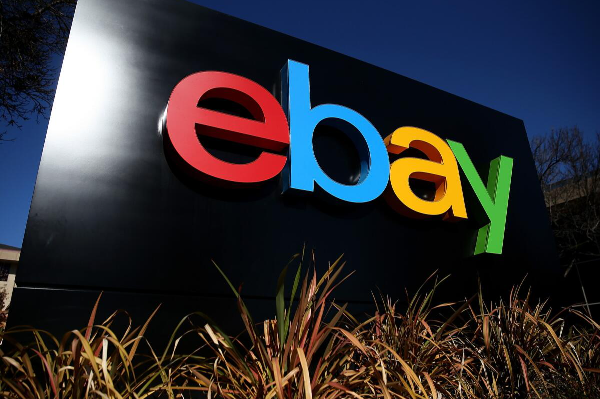Misconceptions About Commodities
Clarifying Commodity Misunderstandings
One common misconception is the broad belief that all goods and services are commodities. While commodities are typically raw materials or primary agricultural products, such as oil, gold, or wheat, not all offerings fall into this category. Mislabeling a product as a commodity can diminish its perceived value, leading businesses to neglect opportunities for differentiation and innovation.
The Impact on Business Strategy
When businesses mistakenly treat non-commodity goods or services as interchangeable and undifferentiated, they risk losing competitive edge. Recognizing what truly constitutes a commodity is essential to crafting unique value propositions and fostering innovation. This understanding helps businesses position themselves distinctively in the market, ultimately driving growth and customer loyalty.
Investment Pitfalls
Misconceptions about commodities can also affect investment decisions. Investors who fail to distinguish between commodities and other asset types might make ill-informed choices, such as underestimating the volatility or market dynamics of certain goods. By understanding the nuances of commodities, investors can better analyze risks, identify opportunities, and optimize their portfolios.
This balanced perspective emphasizes the importance of clarity in defining commodities, whether for business strategy or investment insight.
Characteristics of Non-Commodities
Uniqueness and Differentiation
Non-commodities stand out due to their distinctive characteristics or features that set them apart from competitors. Unlike commodities, which are often viewed as interchangeable, these goods or services are crafted with innovation and individuality, making them highly appealing to specific consumer groups.
Targeted Production
Non-commodities are typically designed for a particular purpose or demographic. By aligning production with the preferences of a defined target market, businesses can meet customer needs more effectively while cultivating brand loyalty and niche appeal.
Customization and Personalization
A defining trait of non-commodities is their ability to be tailored to individual preferences. Whether it’s bespoke services or personalized products, this adaptability adds immense value by creating experiences that resonate deeply with consumers.
Higher Perceived Value
Due to their uniqueness and customized nature, non-commodities often enjoy a higher perceived value. They are viewed as premium offerings, allowing businesses to leverage pricing strategies that reflect the exclusivity of their goods or services.
This understanding not only highlights the advantages of non-commodities but also provides a strategic lens for businesses aiming to differentiate themselves in competitive markets.
Examples of Non-Commodities
Luxury Goods
Designer clothing, premium jewelry, and other luxury items exemplify non-commodities. These goods are valued for their craftsmanship, exclusivity, and branding, making them unique and desirable to specific consumer groups.
High-End Electronics
Advanced gadgets and high-end electronics with distinctive features fall into the category of non-commodities. Products such as top-tier smartphones or innovative smartwatches stand out through cutting-edge technology and design, catering to niche market demands.
Customized Products
Tailored suits, handmade furniture, and other bespoke creations are quintessential examples of non-commodities. Their customization ensures each item reflects the unique preferences of the buyer, enhancing their appeal and perceived value.
Specialized Services
Services such as consulting, coaching, or therapy, which require expertise and personal interaction, cannot be classified as commodities. These services are highly individualized, offering tailored solutions that meet specific client needs and goals.
Understanding these examples underscores the critical distinction between commodities and non-commodities, highlighting their potential to drive differentiation and value in business.
The Role of Perception in Commoditization
How Perception Shapes Value
Perception is a powerful force in determining whether a good or service is classified as a commodity. If consumers view a product as unique or high-quality, they are less likely to consider it interchangeable with others in the market. This distinction plays a crucial role in maintaining a competitive edge.
The Impact of Marketing and Branding
Effective marketing and branding strategies can transform how a product is perceived. By emphasizing unique features and crafting compelling narratives, businesses can create strong value propositions. This approach helps position their offerings as exclusive, setting them apart from generic commodities.
Customer Experience as a Differentiator
Customer experience and satisfaction are equally critical in influencing perception. Exceptional service, personalized interactions, and positive reviews can elevate a product's status, fostering loyalty and distinguishing it from commodity goods.
By managing perception through branding, marketing, and customer engagement, businesses can protect their offerings from being categorized as commodities and sustain their unique appeal in the marketplace.
Commoditization and Differentiation Strategies
Emphasizing Unique Features and Benefits
One of the most effective ways businesses can counter commoditization is by focusing on differentiation. Offering unique features, benefits, or innovations in their products or services helps establish a distinct identity in the market, making it harder for competitors to replicate.
Building a Strong Brand Identity
Creating a compelling brand identity and fostering customer loyalty are vital strategies for avoiding commoditization. A strong, recognizable brand not only resonates with consumers but also adds emotional value to a product or service, ensuring it is perceived as more than just a commodity.
Customization and Personalization
Offering tailored or bespoke products and services is another proven approach to avoid commoditization. Personalized experiences cater to individual customer preferences, increasing perceived value and reinforcing the exclusivity of the offering.
Enhancing Customer Experience
Delivering an exceptional customer experience is key to creating a unique value proposition. Businesses can differentiate themselves by ensuring satisfaction at every touchpoint, from personalized support to seamless interactions, leaving a lasting positive impression.
These strategies collectively enable businesses to rise above commoditization, ensuring their offerings stand out in competitive markets.
Conclusion
Understanding the distinctions between commodities and non-commodities is crucial for businesses and investors alike. Commodities, by definition, are interchangeable raw materials or agricultural products, whereas non-commodities offer uniqueness, customization, and higher perceived value. Misconceptions surrounding these categories can hinder innovation, lead to poor business strategies, and result in misguided investment decisions.
By focusing on differentiation strategies, such as emphasizing unique features, building strong brand identities, and enhancing customer experiences, businesses can avoid commoditization and create sustainable value propositions. The role of perception, influenced by marketing and customer satisfaction, further underscores the importance of positioning products and services strategically to stand out in competitive markets.
Incorporating these insights can empower businesses to unlock new opportunities and maintain their edge in dynamic, ever-evolving industries.





























Misconceptions About Commodities
Clarifying Commodity Misunderstandings
One common misconception is the broad belief that all goods and services are commodities. While commodities are typically raw materials or primary agricultural products, such as oil, gold, or wheat, not all offerings fall into this category. Mislabeling a product as a commodity can diminish its perceived value, leading businesses to neglect opportunities for differentiation and innovation.
The Impact on Business Strategy
When businesses mistakenly treat non-commodity goods or services as interchangeable and undifferentiated, they risk losing competitive edge. Recognizing what truly constitutes a commodity is essential to crafting unique value propositions and fostering innovation. This understanding helps businesses position themselves distinctively in the market, ultimately driving growth and customer loyalty.
Investment Pitfalls
Misconceptions about commodities can also affect investment decisions. Investors who fail to distinguish between commodities and other asset types might make ill-informed choices, such as underestimating the volatility or market dynamics of certain goods. By understanding the nuances of commodities, investors can better analyze risks, identify opportunities, and optimize their portfolios.
This balanced perspective emphasizes the importance of clarity in defining commodities, whether for business strategy or investment insight.
Characteristics of Non-Commodities
Uniqueness and Differentiation
Non-commodities stand out due to their distinctive characteristics or features that set them apart from competitors. Unlike commodities, which are often viewed as interchangeable, these goods or services are crafted with innovation and individuality, making them highly appealing to specific consumer groups.
Targeted Production
Non-commodities are typically designed for a particular purpose or demographic. By aligning production with the preferences of a defined target market, businesses can meet customer needs more effectively while cultivating brand loyalty and niche appeal.
Customization and Personalization
A defining trait of non-commodities is their ability to be tailored to individual preferences. Whether it’s bespoke services or personalized products, this adaptability adds immense value by creating experiences that resonate deeply with consumers.
Higher Perceived Value
Due to their uniqueness and customized nature, non-commodities often enjoy a higher perceived value. They are viewed as premium offerings, allowing businesses to leverage pricing strategies that reflect the exclusivity of their goods or services.
This understanding not only highlights the advantages of non-commodities but also provides a strategic lens for businesses aiming to differentiate themselves in competitive markets.
Examples of Non-Commodities
Luxury Goods
Designer clothing, premium jewelry, and other luxury items exemplify non-commodities. These goods are valued for their craftsmanship, exclusivity, and branding, making them unique and desirable to specific consumer groups.
High-End Electronics
Advanced gadgets and high-end electronics with distinctive features fall into the category of non-commodities. Products such as top-tier smartphones or innovative smartwatches stand out through cutting-edge technology and design, catering to niche market demands.
Customized Products
Tailored suits, handmade furniture, and other bespoke creations are quintessential examples of non-commodities. Their customization ensures each item reflects the unique preferences of the buyer, enhancing their appeal and perceived value.
Specialized Services
Services such as consulting, coaching, or therapy, which require expertise and personal interaction, cannot be classified as commodities. These services are highly individualized, offering tailored solutions that meet specific client needs and goals.
Understanding these examples underscores the critical distinction between commodities and non-commodities, highlighting their potential to drive differentiation and value in business.
The Role of Perception in Commoditization
How Perception Shapes Value
Perception is a powerful force in determining whether a good or service is classified as a commodity. If consumers view a product as unique or high-quality, they are less likely to consider it interchangeable with others in the market. This distinction plays a crucial role in maintaining a competitive edge.
The Impact of Marketing and Branding
Effective marketing and branding strategies can transform how a product is perceived. By emphasizing unique features and crafting compelling narratives, businesses can create strong value propositions. This approach helps position their offerings as exclusive, setting them apart from generic commodities.
Customer Experience as a Differentiator
Customer experience and satisfaction are equally critical in influencing perception. Exceptional service, personalized interactions, and positive reviews can elevate a product's status, fostering loyalty and distinguishing it from commodity goods.
By managing perception through branding, marketing, and customer engagement, businesses can protect their offerings from being categorized as commodities and sustain their unique appeal in the marketplace.
Commoditization and Differentiation Strategies
Emphasizing Unique Features and Benefits
One of the most effective ways businesses can counter commoditization is by focusing on differentiation. Offering unique features, benefits, or innovations in their products or services helps establish a distinct identity in the market, making it harder for competitors to replicate.
Building a Strong Brand Identity
Creating a compelling brand identity and fostering customer loyalty are vital strategies for avoiding commoditization. A strong, recognizable brand not only resonates with consumers but also adds emotional value to a product or service, ensuring it is perceived as more than just a commodity.
Customization and Personalization
Offering tailored or bespoke products and services is another proven approach to avoid commoditization. Personalized experiences cater to individual customer preferences, increasing perceived value and reinforcing the exclusivity of the offering.
Enhancing Customer Experience
Delivering an exceptional customer experience is key to creating a unique value proposition. Businesses can differentiate themselves by ensuring satisfaction at every touchpoint, from personalized support to seamless interactions, leaving a lasting positive impression.
These strategies collectively enable businesses to rise above commoditization, ensuring their offerings stand out in competitive markets.
Conclusion
Understanding the distinctions between commodities and non-commodities is crucial for businesses and investors alike. Commodities, by definition, are interchangeable raw materials or agricultural products, whereas non-commodities offer uniqueness, customization, and higher perceived value. Misconceptions surrounding these categories can hinder innovation, lead to poor business strategies, and result in misguided investment decisions.
By focusing on differentiation strategies, such as emphasizing unique features, building strong brand identities, and enhancing customer experiences, businesses can avoid commoditization and create sustainable value propositions. The role of perception, influenced by marketing and customer satisfaction, further underscores the importance of positioning products and services strategically to stand out in competitive markets.
Incorporating these insights can empower businesses to unlock new opportunities and maintain their edge in dynamic, ever-evolving industries.